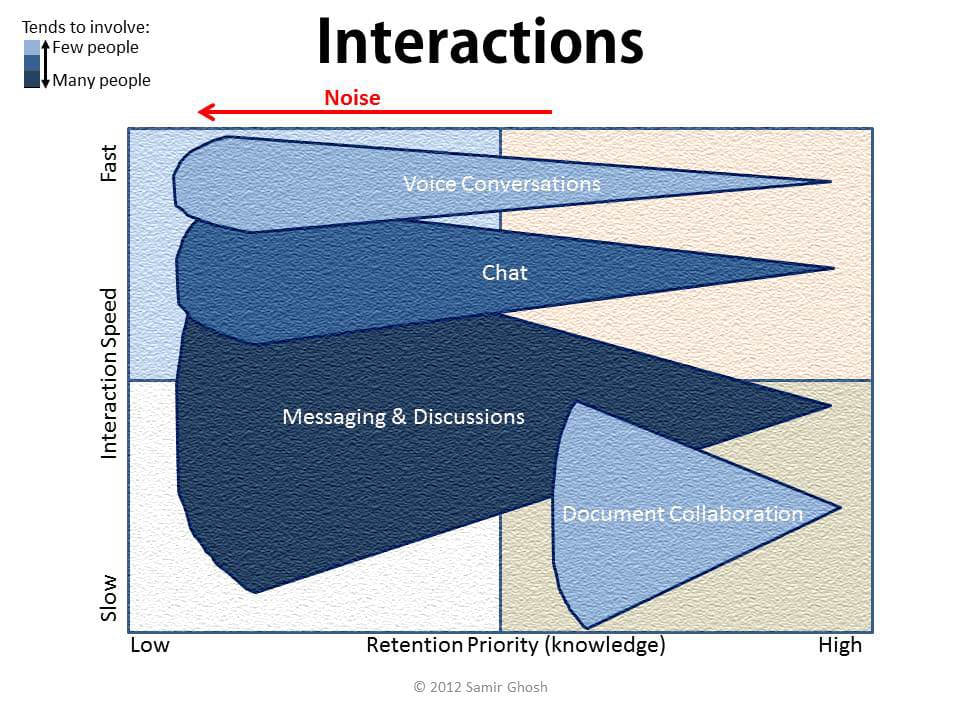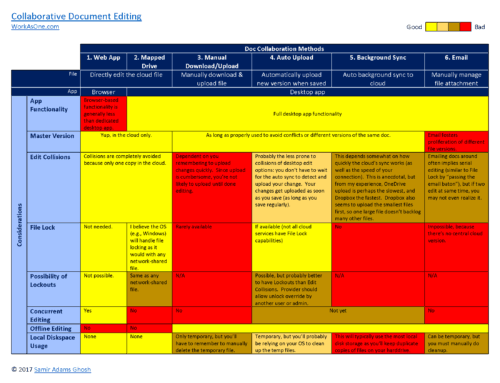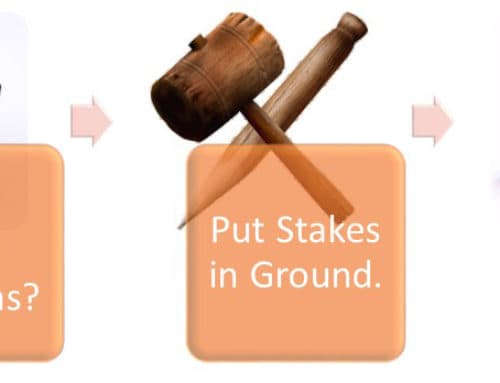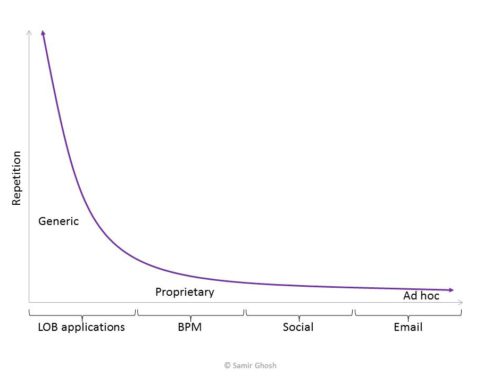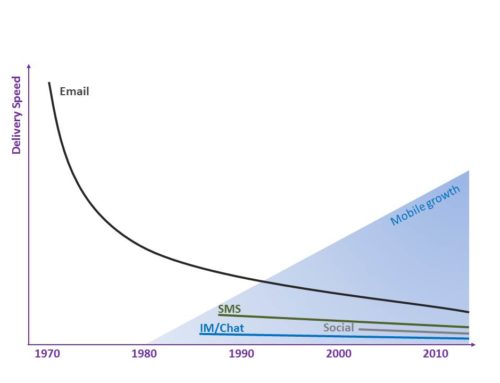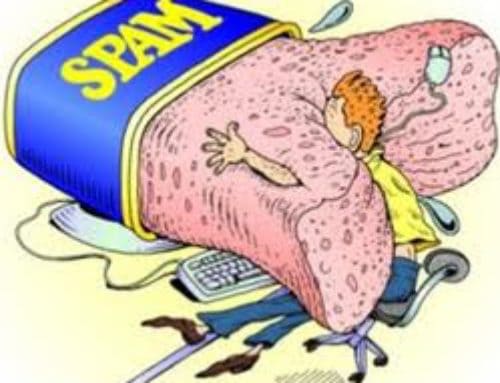Gutenberg’s printing press initiated mass knowledge capture via books. The Internet is enabling another monumental knowledge boon, but this is not limited to just web pages. In fact, rapidly increasing pace, more multi-tasking, greater agility, and even shortening attention spans are moving us away from the era of large, heavy books or documents to an increasing amount of micro-content. Major decisions and valuable knowledge can be found in micro-content including email, microblogging, and SMS mobile texting. The question is: how much of it is useful knowledge and how much creates noise that just makes finding the useful stuff more challenging?
The above chart illustrates concepts and is not intended to indicate relative magnitudes in any dimension. However, it may be interesting to think about which collaborative interactions should be prioritized for knowledge retention (i.e., most valuable knowledge). Does the interaction medium effect the likelihood of useful information? or the number of people involved in the interaction? For example, do more real-time media lend to less pre-thought posts, perhaps resulting in less useful info early in a chat conversation, but more valuable conclusions worth saving at the end? In contrast, an initial blog post has considerable thought (well, some do at least) up front, followed by less formal comments by readers. The bottom line is we don’t know, so all if it is kept for future retroactive analysis, which leaves us in the burgeoning age of big data, with snowballing growth of lots of little data (micro-content) instead of traditional heavy data (big books and documents).

